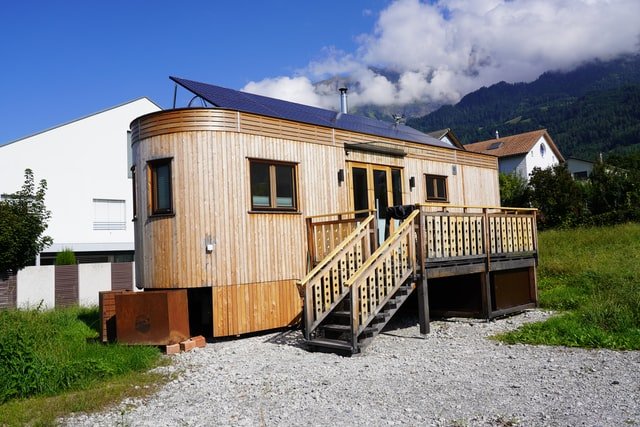Why tiny homes are on the rise for downsizers

In recent years, housing affordability has become a major concern for Australians. At the same time that the cost of living has been escalating, so too has the price on property exploded, and the cities continue to attract more and more people into them.
In addition to that is the rapidly aging Australian population, and as people retire they will start to look to downsize, putting more expensive stock on the (their larger previous properties), as they look for something smaller to suit their lifestyles into retirement.
Combined, these trends have meant that the interest in small, affordable housing is exploding. The most extreme of these – and the option that many Australians absolutely love the concept of (even if they’re a little unsure of buying right now) – is that of the “tiny house”.
What is a “tiny house?”
Tiny houses have a specific description: they are dwellings of 37 square metres or less. They are fixed to the land (though they often look portable), and this distinguishes them from tiny houses on wheels (THOW), which are built on trailers.
They are pitched as the truly affordable option, being extremely energy-efficient, sustainable, and inexpensive.
For example, the median price of an apartment in Sydney is around $700,000, while a tiny house will not likely cost more than $185,000 ($3,000 - $5,000 per square meter).
They’re appealing because they offer everything that you want in a house – a place to cook, shower, clean, eat and sleep – but without the excesses. You won’t fit many material possessions in the tiny house, but then many of the people that buy into this trend don’t care for material possessions.
Finally, because of the small footprint and inexpensive nature of tiny houses, they allow you to live closer to the action; no more lengthy commutes out of suburbia.
The challenge of tiny houses in Australia
In the US, tiny houses are already deeply ingrained and popular. The interest is there in Australia, for the reasons listed above, but there are some challenges that have slowed uptake. As noted in an article on The Conversation, the prices of the underlying land can still be very expensive and make a tiny house a big investment for something… small.
There are also regulatory issues around zoning and, in extreme cases, a tiny home might be considered a “trailer”, with various jurisdictions having laws about living permanently in trailers.
There are also practical issues around the lack of financing options for these kinds of properties, the difficulty in insuring them, and the risk that the investment won’t have the capital gains benefits of large houses.
Far from chilling the future of tiny houses, however, these are just hurdles that will be overcome.
At some point, the pressures being placed on housing and lifestyle affordability, as well as the need to drive more sustainable ways of living, will force the regulators to change laws to better allow, and even encourage, tiny house lifestyles.
As the regulatory environment opens up, so will the access to finance, and the number of manufacturers of tiny homes locally, which will help boost their appeal to even more people.
What to look for in a tiny house
If a tiny house is right for you, then congratulations! There are a couple of things to keep in mind to ensure that your space is the comfortable lifestyle change you want it to be.
1. Make sure there’s a lot of natural light being let in, and that you’ve got tall ceilings. Big windows and a lot of vertical space create an airy impression and make that 37 square meters look a lot bigger than it is.
2. Make sure the space is designed to be multi-functional. The living space should convert to a bedroom at night, for example.
3. Ensure that movement through the space is linear. If there is a need to “cut across spaces” – as a normal house is designed with its web of rooms – then in a tiny house the space will actually look constrained. Instead, have one linear path into and back out of the house to create the perception of length.
4. Declutter to the extreme. Not only will your tiny house have storage space at a premium, but the more stuff that is in it, the smaller the space will appear. The good news is that you don’t need to go without anything. A library of books can be consolidated to an e-reader. A collection of DVDs can exist as a hard drive or be streamed over the cloud.
The key to enjoying your move to a tiny home is not about making sacrifices, but shifting your lifestyle to accommodate a change – a change that will save you money and make you more comfortable in the process.
We’re just starting to hear about tiny homes now, but it will become a booming market in the years ahead. Australians are lifestyle-orientated and tend to choose where they live, and the space that they live in, based on what it will do for their lifestyle. For many, the conveniences and savings allowed by a tiny home will make it the ideal way to live.
This is a one-time notice from SCHOOL OF MINNOWS, a free value added service on steem.
Getting started on steem can be super hard on these social platforms 😪 but luckily there is some communities that help support the little guy 😊, you might like school of minnows, we join forces with lots of other small accounts to help each other grow!
Finally a good curation trail that helps its users achieve rapid growth, its fun on a bun! check it out. https://som-landing.glitch.me/